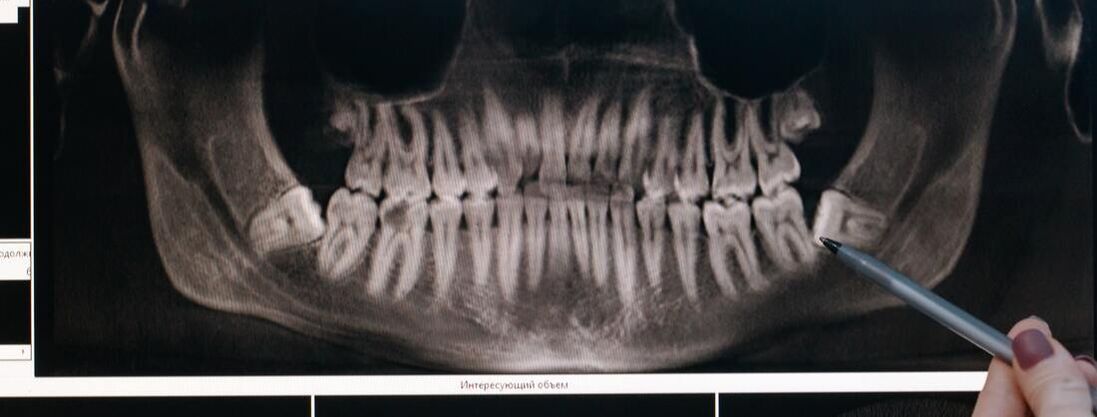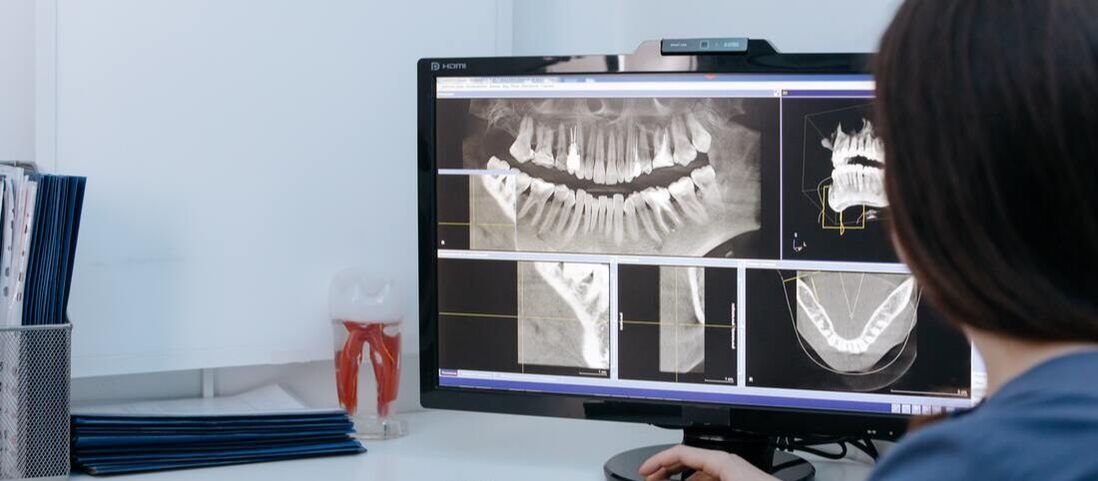The data in this information is based on the research conducted by Industry ARC (Analytics. Research. Consulting) and Precedence Research. The study on the growth of the dental imaging market conducted by Industry ARC focuses on the base year of 2018 with a forecast up to 2025. The report by Precedence is more recent with data based on the year 2021 and a forecast up to 2030. Both studies thoroughly analyze the global market share, demand, drivers, challenges, and products. WHAT IS DIGITAL DENTAL IMAGING?Dental digital imaging is an advanced radiographic process that involves the use of a hard sensor or receptors to capture images that are displayed on a computer. The procedure entirely depends on radiation penetrating the dental structures. The teeth and bones absorb the x-rays, while the rays pass easily through the gums, cheeks, and any other soft tissue and form the image. Cone-beam computed tomography (CBCT) systems are incorporated to create accurate, three-dimensional imaging. The images can be viewed, stored, and transferred on computer hardware and software. They accurately detect abnormalities and reveal defects in the dental structure that would otherwise go unseen during routine dental exams. The visuals also make it easier for dentists and patients to understand the issue at hand, assess accordingly, and pursue the most effective treatment plan. However, dental imaging is not limited to patient treatment planning and is intended for several applications. Digital dental imaging can also be used for diagnostic or forensic purposes as well. Some examples include cavities detection, tooth roots glancing, checking the status of a developing tooth, and abnormal bone or teeth densities. Digital is the preferred mode of dentists and patients for taking dental x-rays, as they are more convenient and safer than traditional imaging techniques. Not only that, but they’re faster and transmit less radiation than traditional as well. They are less harmful to patients as they contain up to 90% less radiation. The images can appear on the computer in seconds, and the digital environment allows high-quality images to be zoomed in on with clarity. According to Fact.MR, a market research and competitive intelligence company, the global market for dental digital x-rays increased by 4% CAGR within the last five years. Analysis revealed that the global dental digital imaging industry was valued at $2.9 billion in United States Dollars (USD) in 2020. The value is projected to grow more than double by 2031. GROWTH FACTORS FOR DENTAL DIGITAL X-RAYSWith the market expected to top a valuation of $6 billion USD by 2031, there are many factors working together to create an ideal environment for dental digital X-ray applications across the world. The prime contributions to the growing demand for digital dental imaging are technological advancements in dental imaging techniques, the increasing geriatric population, correlating growth in the cosmetic dentistry market, government efforts to promote oral health care, and the increase in dental diseases. With such technical advancements, the ability of digital systems to reduce diagnosis time and improve image quality has made getting access and education regarding oral health more convenient. The rising adoption of CBCT and 3-D imaging systems has made visualization more impactful and diagnoses more accurate. Not only that, but the wide range of applications for dental imaging is making it easier for other sectors as well, including therapeutic, cosmetic, and forensic. Also, the additive technology of computer-aided manufacturing and computer-aided design (CAD/CAM) is allowing for better and more precise restorations, encouraging dental professionals to switch from analog to digital workflows. Additionally, the rising geriatric population in the United States is a likely factor in the heightening demand for dental digital radiography. Many older Americans are less likely to maintain their oral health because of their personal habits, disabilities, or lack of insurance. Habitual smokers who are 50 years plus are less likely to pursue dental care than non-smokers. In addition, those are who disabled, homebound, or institutionalized are more likely to have poor oral health. Lastly, many of the geriatric population lack dental insurance because they lost benefits upon retirement. Routine dental care is not covered by federal Medicare. Oral health problems that affect older adults the most include untreated tooth decay, gum disease, tooth loss, oral cancer, and chronic disease. Moreover, the surging demand for cosmetic dentistry has a high correlation to digital dental market opportunities. Body modifications are growing in popularity and the desire for perfect teeth comes with it. Dental issues have long been taken for granted, but the ADA's efforts have helped promote oral health care in North America. The American government is also putting in efforts to promote oral health care and oral disease prevention, enabling the development of the dental imaging market. Collaborating with key market players to raise awareness of dental products, potential diseases, and damages, the government has progressively been launching pro-dental care campaigns. In addition, tax benefits are also provided to those key market players globally. Despite their endeavor, unfortunately, oral health is still not considered a concern for many around the world. Dental hygiene and disease prevention are not typically thought of as health care. Globally, poor oral health is on the rise, and the increase in dental disorders is one of the many fueling factors augmenting the surging dental digital X-rays market. According to the World Health Organization (WHO), approximately 3.58 billion people worldwide suffer from oral disease with 10% enduring severe gum disorders that can lead to tooth loss. Diseases such as dental caries, oro-dental trauma, oral cancer, and gum disease, among others, pose a major health burden all over the world. The primary causes are ignorance of oral issues and increased sugar consumption. With this, the demand for dental imaging has increased to address the rising numbers of tooth decay cases. On the other hand, the millennial generation’s unhealthy lifestyle has drastically influenced the sugar consumption rate worldwide. One of the most prominent causes of dental cavities is high sugar intake. Packaged foods and desserts are becoming increasingly popular because of the steady growth of disposable income. In turn, dental issues have noticeably increased and driven the dental imaging market. NORTH AMERICA AND DIGITAL DENTAL IMAGING OPPORTUNITIESNorth America currently holds one-third of the world’s digital dental imaging market, in terms of both value and volume. In 2018, they had a share of 33% with the diagnostic segment estimated to grow at 6.50% CAGR through to 2025. Market analysis reveals that the United States generated the majority of total demand in North America, valued at over $770 million USD in 2020. Specifically in the United States, technological advancements have led to a rapid shift from analog systems to digital. The modern and high-quality apparatuses available in American dentistry in congruency with the rise of dental disorders and diseases in the younger population have made the nation a hotspot for digital dental radiography. Aside from that, the help of the ADA to encourage dental care is creating a great level of awareness. The United States sees an increase in the number of patients opting for dental care every year. CHALLENGES OF THE DENTAL IMAGING MARKETThe dental imaging market has many challenges to overcome. Problems including sensor placement, infection control, ignorance, costs, lack of staffing, and technological barriers significantly hinder the growth of the market. When it comes to the physical aspect of obtaining a digital dental x-ray, many patients and dental practitioners can agree that it is an uncomfortable process. Sensors can be difficult to position because of their large and rigid frame. It is not easy to reach the back of the mouth because the sensor is not so mobile. Next, infection control is vital as the scanners are placed inside the patient's mouth. Diseases are highly transmittable in an oral environment. Equipment that has to be used in the mouth has the potential to be a breeding zone for bacteria and disease if not properly kept clean. Medical equipment in general poses a high risk for transmission. On the other hand, while America has started promoting dental market players, and good oral healthcare, other countries around the world are severely lacking in these resources. A lack of awareness, products, and people driven to promote this type of healthcare is a global problem, especially in developing and underdeveloped regions of the world. Furthermore, the expense of dental imaging devices and equipment is simply too high for many regions, restricting the global expansion of the dental imaging market. One of the reasons for the high cost of x-rays is that the equipment is worth a lot of money. The wired scanners, not including computers, software, or hardware, can cost from $11,000 to $15,000 USD. Some parts of the equipment are prone to damage as well and require regular maintenance or replacement. Another reason is that radiologists invest a lot of time and training prior to performing. Also, due to the low number of dentists and dental practitioners in low and medium-income nations, the dental industry is hampered in general. In America, alone, we are already seeing the impact the shortage of orthodontists and dental lab technicians have on the overall oral health of the nation. The ADA estimates there are less than 10,700 practicing orthodontists in the nation, translating to approximately 3.27 orthodontists for every 100,000 people. According to Jimmy Stegall of Dentsply Sirona, with only 1.8 graduating dentists per 100 thousand of the population and less than 6,000 dental labs in the United States currently, the biggest problem that the dental industry face is staffing. Finally, the advancement of technology actually serves as a hindrance for older generation dental professionals. Older practitioners are more likely to be cautious when it comes to adopting new technology in their offices, and many won’t even consider investing in the equipment until there are more years of research. One of the main concerns regards the safety of radiation generation. When performing x-rays, it’s important to get the dental imaging right on the first attempt so as not to cause further or additional exposure to radiation. As this is already a challenge, having to maneuver around unfamiliar technology can be stressful. Sources: Dental Imaging Market Overview Market Outlook for Dental Digital X-ray Dental Imaging Market Digital Imaging Basics Older Adult Oral Health Dental Imaging Market: Global Opportunity Analysis and Industry Forecast, 2021-2030 Market Next Level Dentures In 3 Appointments with Jimmy Stegall Keywords:
The Dental Lab, dentistry, dental imaging, x-rays, digital, technology, teeth
2 Comments
10/25/2023 03:23:35 pm
Thank you for letting me know that the expense of dental imaging devices restricts global expansion, especially in developing and underdeveloped regions. I heard that dental digital X-rays can advance dental care globally. I think it's best to encourage investment in advanced dental imaging equipment to provide excellent patient care.
Reply
Stats N Data
3/27/2024 06:37:05 am
Great post! For unparalleled market insights and research resources tailored specifically to the market research industry, explore Stats N Data (https://www.statsndata.org). Our platform offers invaluable market intelligence across diverse domains, empowering businesses with actionable insights that drive success. Looking forward to more engaging content from you!
Reply
Leave a Reply. |




